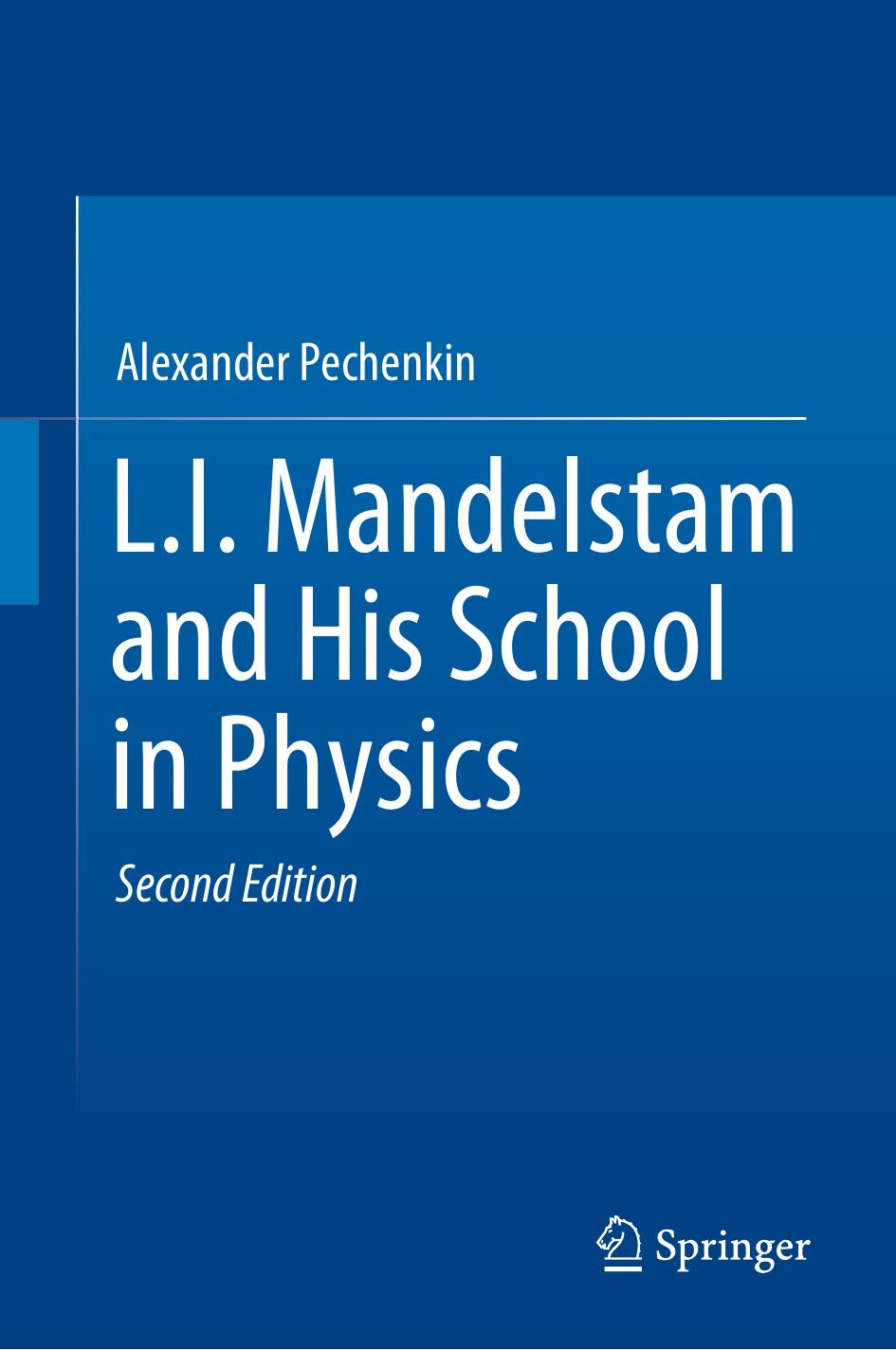L.I. Mandelstam and His School in Physics by Alexander Pechenkin

Author:Alexander Pechenkin
Language: eng
Format: epub, pdf
ISBN: 9783030176853
Publisher: Springer International Publishing
L.I. Mandelstam came to MSU in 1925. This was time of enthusiasm and romanticism. Young people came to science in order to serve for the truth which was associated with Revolution and with the materialistic world view. Scientific research was considered by them as a part of the great work of Soviet people.
Science is impossible without discussions and sharp criticism. Such discussions were typical for the end of the 1920s and the beginning of the 1930s. Some scientific discussions got the status of philosophical ones. An example was the discussion concerning the Richard von Mises frequency conception of probability (see Chap. 7).
True, the governmental power became to direct philosophical discussions at the end of the 1920s. This power first supported the “dialecticians” guided by A.M. Deborin and B.M. Hessen. Later, this power supported the “materialists” who were treated as the proponents of “mechanist physics” by the “dialecticians” (the main figure among the “materialists” was A.K. Timiriazev—he was mentioned at the beginning of Chap. 6).
The Mandelstam School was formed as an open scientific community. To enter this community, one needed to show his scientific qualification and ability to communicate with the other members of the community.
Not only L.I. Mandelstam’s ideas were in the centrum of discussions and theoretical activity in this community. As we shall see, Mandelstam’s former students put forward their own ideas and Mandelstam participated in the development of these ideas.
L.I. Mandelstam helped his graduate students and his former graduate students. In particular, he wrote the references for them. It is possible that he recommended some of them in his verbal communications. However, he was open for people who did not belong to the community which was called the Mandelstam School. For example, the Mandelstam file in the Archives of the Academy of Sciences keeps a letter of reference written in favor of a person who was ideologically very distant from the Mandelstam School. This was A.S. Predvoditelev, the supervisor of A.A. Vitt’s diploma work. In 1936, I.E. Tamm sharply criticized A.S. Predvoditelev’s theoretical writings. Tamm’s criticism was published in “Journal of experimental and theoretical physics” directed by Mandelstam and A.F. Ioffe as editors in chief [332]. True, this letter of reference was probably written at the beginning of the 1930s, but Predvoditelev did not belong to the Mandelstam circle in those years, either. Mandelstam’s letter of reference emphasized Predvoditelev’s experimental achievements (this letter had not written by Mandelstam’s hand, but other letters of reference, say for G. Gorelik, had not written by Mandelstam’s hand, either).
During the second half of 1930, when L.I. Mandelstam and the majority of his former students moved to Academy of Science Institute of Physics (FIAN), the character of Soviet science changed: Soviet science became more bureaucratic, a break between research and education arose (see [343, 359, 360, 361]). A reinterpretation of moral norms took place. However, we find ourselves in the second half of the 1920s, yet. G.S. Landsberg conducts his great experiments near Mandelstam’s apartment. Lidia Solomonovna Mandelstam maintains the mercury lamp luminescence. Andronov and Leontovich made friends and discuss their collaborative work.
Download
L.I. Mandelstam and His School in Physics by Alexander Pechenkin.pdf
This site does not store any files on its server. We only index and link to content provided by other sites. Please contact the content providers to delete copyright contents if any and email us, we'll remove relevant links or contents immediately.
| Automotive | Engineering |
| Transportation |
Whiskies Galore by Ian Buxton(41544)
Introduction to Aircraft Design (Cambridge Aerospace Series) by John P. Fielding(32893)
Small Unmanned Fixed-wing Aircraft Design by Andrew J. Keane Andras Sobester James P. Scanlan & András Sóbester & James P. Scanlan(32581)
Craft Beer for the Homebrewer by Michael Agnew(17940)
Turbulence by E. J. Noyes(7720)
The Complete Stick Figure Physics Tutorials by Allen Sarah(7151)
Kaplan MCAT General Chemistry Review by Kaplan(6606)
The Thirst by Nesbo Jo(6452)
Bad Blood by John Carreyrou(6286)
Modelling of Convective Heat and Mass Transfer in Rotating Flows by Igor V. Shevchuk(6232)
Learning SQL by Alan Beaulieu(6045)
Weapons of Math Destruction by Cathy O'Neil(5854)
Man-made Catastrophes and Risk Information Concealment by Dmitry Chernov & Didier Sornette(5674)
Digital Minimalism by Cal Newport;(5398)
Life 3.0: Being Human in the Age of Artificial Intelligence by Tegmark Max(5199)
iGen by Jean M. Twenge(5171)
Secrets of Antigravity Propulsion: Tesla, UFOs, and Classified Aerospace Technology by Ph.D. Paul A. Laviolette(5014)
Design of Trajectory Optimization Approach for Space Maneuver Vehicle Skip Entry Problems by Runqi Chai & Al Savvaris & Antonios Tsourdos & Senchun Chai(4849)
Electronic Devices & Circuits by Jacob Millman & Christos C. Halkias(4760)
